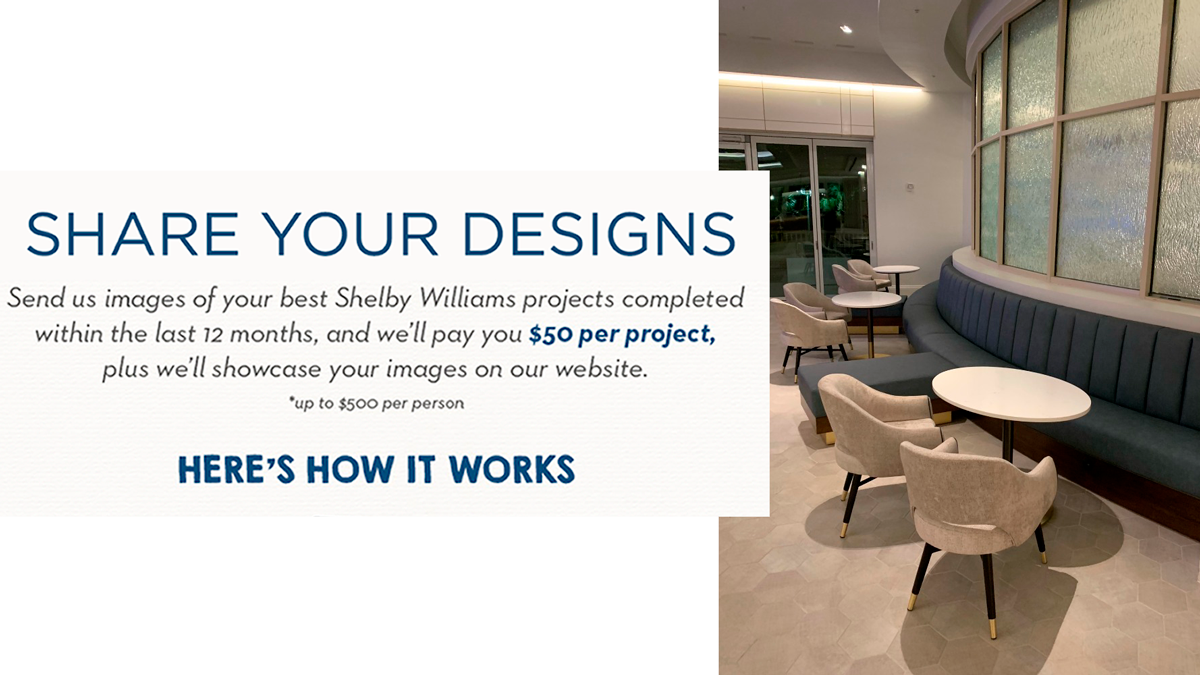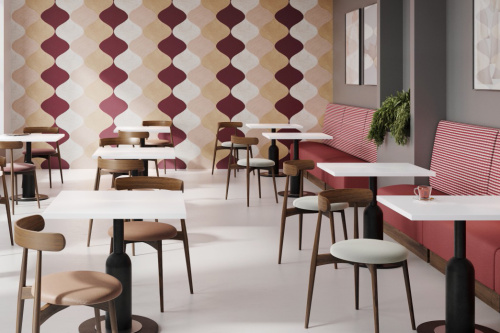
Happiness and Doing Business
Have you heard of the Science of Happiness? It is a casual term for the field of Positive Psychology, which did not exist until Dr. Martin Seligman and Dr. Mihaly Csikszentmihalyi created it in 1998. Positive Psychology is not a fad or self-help mumbo jumbo; it is the study of wellbeing. I find the topic fascinating. Traditional psychology focuses on negatives or areas we are deficient in, helping us improve, whereas Positive Psychology focuses on maximizing the good in life. So, what does this have to do with selling your design concepts or furniture for that matter? Sales trainers teach us that relationships are paramount to success. They are the centering point in our personal and work lives.
Regardless if you are in Sales or Design, you probably know a question is the basis of uncovering the information needed to guide the presentation process. After all, how do you know what the client wants without asking? Did you know a question also builds relationships and passes on happiness? Allow me to explain. According to research, human connection is vital to business. The quality of these connections affects how individuals flourish, ultimately impacting the organization as a whole. There are two types of connections: life-giving and life-depleting. Life-giving connections are strong, resilient, genuine, and supportive, often building trust and providing care individuals need to feel secure. Life-depleting relationships are antithetical. They hurt other people due to their lack of interest, communication, empathy, and overall disengagement. None of us are negative in our approach, but I recognize that sometimes emotion or time constraints can cause me to communicate in this manner. Almost all of us can be more life-giving by enhancing our connections with people.
What is a life-giving question? According to the Wilson Learning Corporation’s Counselor Selling Technique, you have two question types: fact-based and feeling-based. A fact question is designed to get the customer talking. They are noninvasive and do not require the client to expose uncomfortable things. An example would be questions like, “How long have you worked here? Have you ever seen one of our projects?” Who is your typical customer? Feeling based questions are aligned with life-giving relationships and reserved for later once you have established rapport. What do you hope your customers say about your renovation? What type of people do you expect to attract? How long do you want a person to stay in your facility? These types of questions ask the client to expose opinions, values, strategy, or objectives. It takes a certain amount of trust to get an honest answer. Working through this, allowing the client to share their thoughts and ideas will make them feel good about the exchange. The more they reveal, the happier they are the more trust they are extending to you.
Thought-provoking questions will generate more interaction than whether or not someone likes the color blue or green. That interaction and conversation will build on the relationship, adding to the life-giving phenomenon. To develop life-giving or high-quality relationships, studies say you must be focused and completely “unplugged” from technology or other preoccupations. Make eye contact, respond thoughtfully, and ask questions. Interacting in this nature will allow an individual to feel safe and put trust in you. As a result, this person will respond in kind naturally (due to a release of oxytocin, which reduces anxiety and increases activity in the sympathetic nervous system) creating feelings of vitality, aliveness, and positive regard. All of this makes good sense and, in regular times, would be more easily achieved.
How do we do this in today’s environment? We cannot meet in person, so there is no eye contact. Many of our clients will never return to the formal office daily. The home office will probably grow in popularity. So, consider the following suggestions for the near and long-term future:
- Video calls are awkward for those not accustomed to it, but I encourage you to try Google Hangouts, Zoom or other tools to help create deeper connections. Millions, if not billions worth of software, is sold this way and often have zero in-person experience.
- Provide thoughtful email response vs. “Okay” or an emoji. Know your customers are worried about the economy, their families, and work. Avoid dwelling on the negatives related to these topics. Talk about something their kids are doing to cope. I was talking to Jordan McInturf, VP of Sales for Shelby Williams, and he is playing a game with his kids every night as they eat dinner. To some, that sounds painful, but to him, it is fun and fulfilling. When I heard the story, it made me feel good about his family time and how he was making the most of this situation.
- Take a moment to thank a customer for an order or something nice they did for you. The handwritten note is almost a lost art form. I believe it will make people happy to receive one.
- Call a person just to see how they are. In this fast-paced world, I am guilty of rushing through this at times, but allowing the client or employee to have a few minutes to tell you how they feel, what they see, what neat thing just happened are all keys to the relationship.
- It’s not just about the client. We should consider our own teams. Consider what Michael Uhler of Specified Agents in Atlanta is doing. He is working with his team to create a plan of attack once his clients start seeing him again. Who will Specified Agents see first? What do they want to present? What can the factories they represent do to help? To me, this is exciting work. It is like a battle plan that everyone on the team can contribute.
While different things make each of us happy, quality relationships, if nurtured, will bring joy and business to everyone. So, take some time to learn from Dr. Martin Seligman and Dr. Mihaly Csikszentmihalyi. Focus on the positives during a time full of negatives. Remember, the right question, followed by active listening, maybe the most powerful relationship-building tool you have and will undoubtedly make your customer happy!

